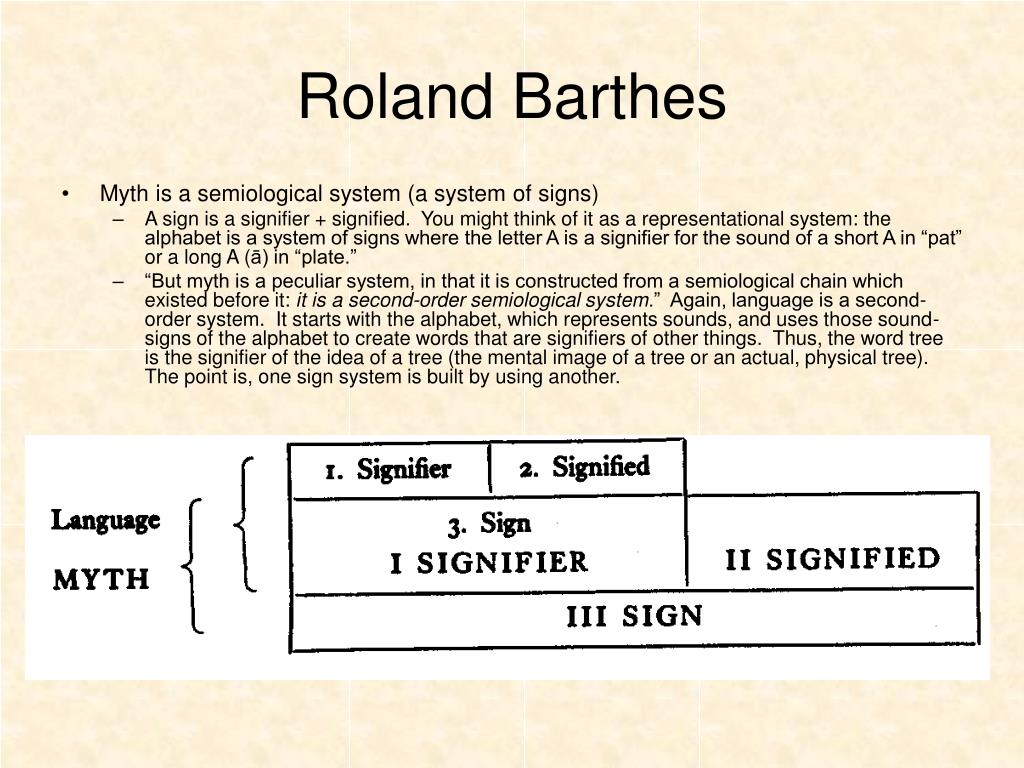

The function of myth is to ’empty reality”, to establish a world “without depth” and to naturalise history.

It deforms and dehistoricises the original connection between the signifier and the signified. Myth also has the character of making “itself look neutral and innocent” -it “naturalises the concept and transforms history into nature’. Myth is a type of speech defined more by its intention than its literal sense. The structure of myth repeats the tridimensional pattern, in that myth is a second order signifying system with the sign of the first order signifying system as its signifier. Barthes considers myth as a mode of signification, a language that takes over reality. In Mythologies (1957) Barthes undertook an ideological critique of various products of mass bourgeoise culture such as soap, advertisement, images of Rome, in an attempt to discover the “universal” nature behind this.

Differing from the Saussurean view that the connection between the signifier and signified is arbitrary, Barthes argued that this connection, which is an act of signification, is the result of collective contract, and over a period of time, the connection becomes naturalised.


 0 kommentar(er)
0 kommentar(er)
